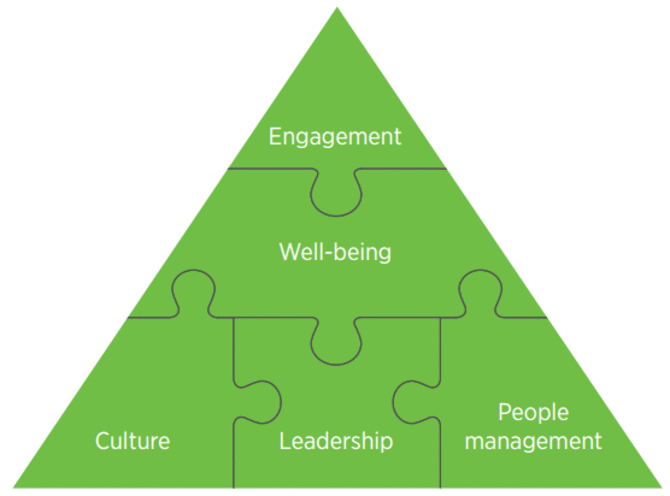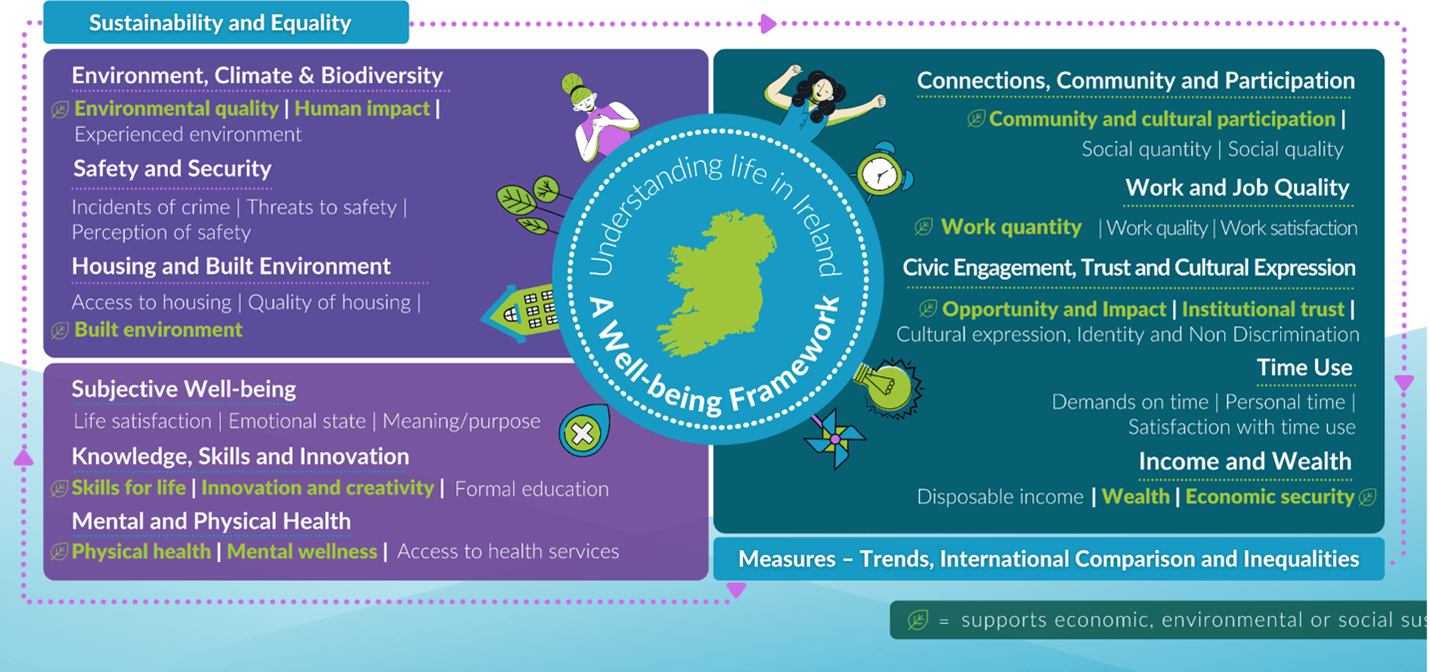Throughout your journey in developing your Healthy Workplace wellbeing programme, you will have prioritised wellbeing topics that your employees and your organisation find particularly important.
This section provides information, tools and resources, national strategies, workplace policy-building tools, and community links specific to these key wellbeing areas.
Understanding that individuals are inextricably linked with their environments, the information contained within each wellbeing area is offered in a way that addresses multiple levels. We offer guidance on actions that can be taken at the organisational level and at the level of your individual employees. The most successful initiatives address components at each of these levels.

Individual initiatives should always be implemented within the context of a Healthy Workplace.
You may come to notice that many wellbeing areas are intertwined. For example, Smoking and Alcohol and Drug campaigns can be connected with stress management and mental health supports.
Likewise, nutrition and physical activity can have implications on mental health. In this way it’s important to make each individual initiative part of a broader workplace wellness programme that is part of the organisation’s strategic plan. Indeed, this is shown in the evidence to improve success and sustainability of workplace wellness efforts.
Furthermore, an overall workplace culture that encourages employee participation in wellness initiatives is integral to engagement and success. In other words, these individual initiatives should always be implemented in the context of a Healthy Workplace.
The Get Started portal of this website provides all the information you need to create your Healthy Workplace.
Lastly, it’s important to consider Ireland’s Wellbeing Framework. This framework outlines 11 key wellbeing dimensions that are integral to living healthy and fulfilled lives.

As you can see, the workplace plays a role in each of these wellbeing areas and is therefore crucial to the wellbeing of the people in Ireland. Our recommendations aim to thread through as many of these wellbeing dimensions as possible so that the time your employees spend at work, is a time of encouraging and protecting their wellbeing.
Coping with Life Transitions
Life and work transitions can impact a person’s wellbeing tremendously. Major transitions can require significant adjustment. These can include dealing with loss of any kind, relocating, returning to work after …
Mental Health
Good mental health sets the foundation for our overall sense of wellbeing; it is the lens through which we experience our lives and underpins our perceptions and our behaviours. Mental …
Healthy Eating
Healthy eating is one of the pillars of health and wellbeing, and the workplace can often be the place where employees eat most of their food, making it an ideal …
Physical Activity
A workforce that is regularly active is a workforce with lowered risk of chronic conditions such as heart attack, stroke and diabetes. Exercise has also been shown to improve mood …
Alcohol and Drugs
An alcohol and drug free workplace is a safer, more productive workplace with lowered risk of chronic disease and mental health difficulties in your workforce. Apart from the legal duty …
Smoking
Creating a smoke-free workplace protects the health of all workers. Smoking and second-hand smoke is a leading risk factor for many chronic diseases. Apart from the legal duty to protect …
Health and Safety
It is important to note that the standards on workplace wellbeing referenced on this site are voluntary and not required by law. Statutory requirements do exist which ensure employers provide …
